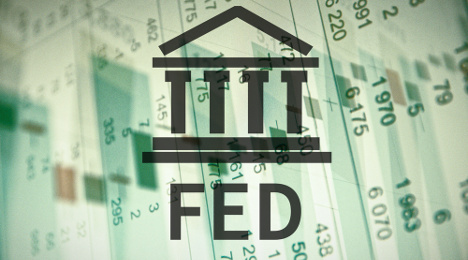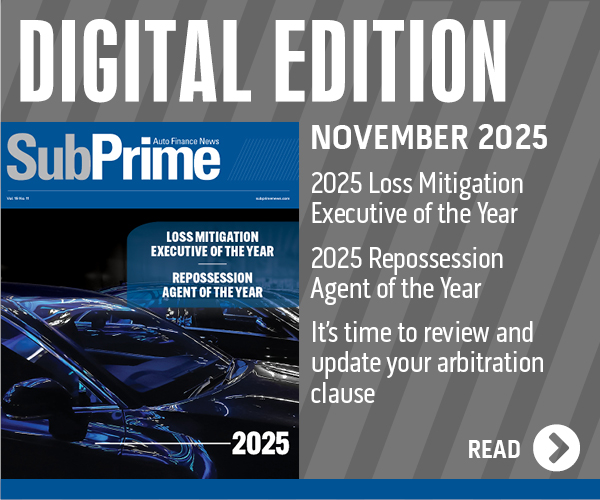Industry awaits Fed decision on interest rates

By subscribing, you agree to receive communications from Auto Remarketing and our partners in accordance with our Privacy Policy. We may share your information with select partners and sponsors who may contact you about their products and services. You may unsubscribe at any time.
BALTIMORE –
Perhaps auto finance companies will know more about interest rates this week since Stifel Nicolaus & Co. chief economist Lindsey Piegza called the upcoming meeting of the Federal Open Market Committee “arguably the most widely anticipated event in the aftermath of the Great Recession.”
Piegza recapped recent remarks by Federal Reserve president William Dudley, who acknowledged the case for a rate increase this week “seems less compelling” than it did several weeks ago. Piegza also noted other Fed officials have said any decision is dependent on the “evolution” of the incoming data leading up to the meeting.
“The only remaining question is,” she said, “what is the data telling us?”
Because on that question, Piegza noted in her recent economic commentaries that most committee members have not yet made up their mind. Instead they will be relying on the latest round of data to determine whether or not it’s time for an interest rate uptick. However, the closer the industry moved to this week’s juncture, the less likely a rate modification was projected to happen, according to Piegza.
“While some Fed members remain clear outliers — Atlanta Fed president Dennis Lockhart would have voted to raise rates some time ago and Chicago Federal Reserve president Charles Evans continues to suggest late 2016 — most policymakers remain on the fence,” Piegza said.
“Such members are not oblivious to the extended timetable of low rates for the past six years, nor are they unaffected by the ticking clock,” she continued.
Subscribe to Auto Remarketing to stay informed and stay ahead.
By subscribing, you agree to receive communications from Auto Remarketing and our partners in accordance with our Privacy Policy. We may share your information with select partners and sponsors who may contact you about their products and services. You may unsubscribe at any time.
And what about Fed chairman Janet Yellen? To offer some analysis, Piegza mentioned Yellen’s remarks during speech to the City Club of Cleveland and then later in her semiannual monetary policy testimony. Each time, Piegza pointed out that Yellen quantified her expected timetable for an interest rate lift to be this year.
“She said that 2015 may still be the appropriate timeline for a rate increase if the economy evolves as we expect,” Piegza said. “Despite the importance Yellen has placed on incoming data, market participants have focused more on the calendar and the rapidly shrinking window of opportunity the Fed still has to initiate the first rate increase this year.
“In other words,” Piegza went on to say, “has the Fed seemingly backed themselves into a corner for a rate increase sometime this year irrespective of economic activity?”
Meanwhile, in his Auto Industry Brief for August, Cox Automotive chief economist Tom Webb looked outside the U.S. for what elements might impact what the Fed does this week.
“The biggest factor weighing on the decision is, of course, China, where a currency devaluation and an all-out effort to thwart a stock market slide are rightly viewed as desperation moves to stimulate growth. Growth that is clearly less than commonly reported,” Webb said.
“The ripple effects on Asian economies could be enormous,” he continued. “In Japan, it would hit an already weak economy. Japan’s GDP contracted in the second quarter. In South Korea, it creates a dilemma: Push down the Won and risk capital flight, or stand by and watch exports slow.
“Europe’s future is also dim,” Webb went on to say. “Growth in the Eurozone has been basically flat despite the benefit of a weaker Euro, lower oil prices and unprecedented quantitative easing. In fact, since the recession, the Eurozone has recovered even more slowly than Japan. Eurozone output is not yet back to its pre-recession peak. (In the U.S., real GDP exceeded its pre-recession high in the third quarter of 2011.)
Like auto finance executives and other industry participants, Piegza anticipates that many observers will be watching what the Fed does during its meeting that begins on Wednesday.
“With a sea of statements including, ‘They have to go,’ or ‘They can’t wait any longer,’ the suspense surrounding the September meeting rivals that of any prior committee decision,” Piegza said.
“The conversation will no doubt be fruitful,” she added. “Oh to be a fly on the wall of that board room.”


